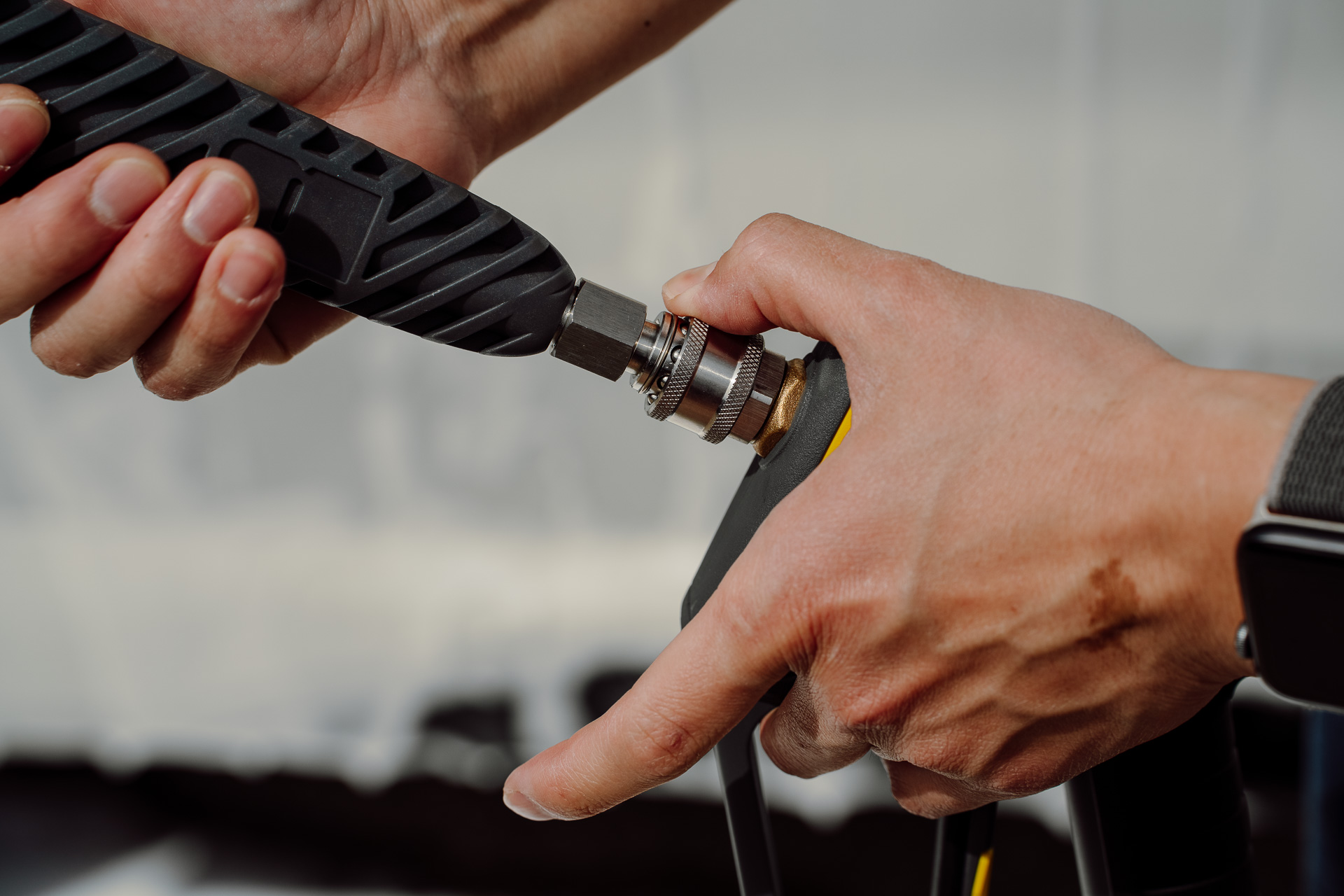Choosing the right fittings is essential for ensuring your pressure washer operates efficiently. This article discusses the basics of compatibility and the key factors to consider when selecting fittings for your machine.
Types of Fittings
Quick-Connect Fittings
Quick connect fittings come in a range of types and sizes, but their main advantage is allowing fast, easy attachment and removal of hoses and accessories. They offer a more convenient and time-saving alternative to traditional threaded fittings, making them ideal for setups where connections need to be changed frequently.
In this video, we’ll show you how to upgrade your standard garden hose and pressure hose connections to a quick connect system using the Cleanskin Stainless Quick Connect Kit.
These fittings allow for fast attachment and detachment of hoses and accessories, saving time during tasks like car detailing. Cleanskin Stainless Quick Connect Kit is the ideal choice for various applications.
Threaded Fittings
Threaded fittings are the standard in Australia and are known for providing a secure, leak-free connection. However, they typically require the use of thread seal tape to ensure a proper seal, which can take more time and effort. These fittings are best suited for more permanent setups, such as fixed pipelines or wall-mounted pressure washers.
In Australia, BSP (British Standard Pipe) threads are commonly used. It’s important not to confuse these with NPT (National Pipe Thread), which is typically used in the United States—BSP and NPT threads are not compatible.
When selecting the right fittings, always check the thread size. Common sizes include 1/4″, 3/8″, and M22 x 1.4mm (with a 14mm internal diameter), which is frequently used in Australian pressure washer systems.
These provide a secure, leak-free connection but require more effort to attach. They are ideal for high-pressure applications, such as rinsing trucks or industrial equipment.
Compatibility Factors
Material Quality
Choose fittings made of stainless steel or brass for durability, as these materials are resistant to corrosion. The material of your pressure washer fittings is key to their durability and performance. Here’s a brief overview of the most common materials:
| Material | Pros | Cons |
| Brass | Most common and affordable. Good for consumer-grade washers (under 3,000 PSI). Decent resistance to rust. | Softer than steel, can wear down over time. Not ideal for high-pressure or frequent professional use. |
| Nickel-Plated Brass | Improved corrosion resistance and a cleaner, more professional look. | Plating can chip off over time, exposing the brass underneath. Slightly more expensive than standard brass. |
| Stainless Steel 201 SS (The Budget Option) | Cheaper than other stainless steel grades. Very hard and strong. | Lower corrosion resistance due to less nickel. Prone to rusting and not recommended for constant exposure to water, chemicals, or humid environments. |
| Stainless Steel 304 SS (The All-Rounder) | Excellent strength and superior corrosion resistance. A great balance of performance and value for prosumer and commercial use. | More expensive than brass or 201 SS. |
| Stainless Steel 316 SS (The Ultimate Choice) | Contains molybdenum for the best corrosion resistance, especially against salt and chemicals (“marine-grade”). The most durable option. | Most expensive material. |
Conclusion
Investing in quality fittings can enhance the longevity and performance of your pressure washer. Proper fittings improve compatibility and help reduce downtime.
-

Calvin brings a wealth of experience across multiple engineering disciplines, including chemical, mechanical, and electrical engineering. His in-depth knowledge of filtration systems and hydraulic pumps has positioned him as an expert in the pressure washer product category. With a unique combination of technical expertise and business insight, Calvin excels at solving complex challenges and driving innovation, particularly in the car detailing industry.
-

Aaron is a passionate car detailing enthusiast who channels his expertise and love for pristine vehicles into engaging blog content for a leading detail store website. With a keen eye for detail and a wealth of knowledge about the latest products and techniques, Aaron provides invaluable insights and tips to fellow car enthusiasts. His dedication to achieving showroom-quality results and his ability to explain complex processes in an easy-to-understand manner make his blog a go-to resource for anyone looking to elevate their car detailing game.

